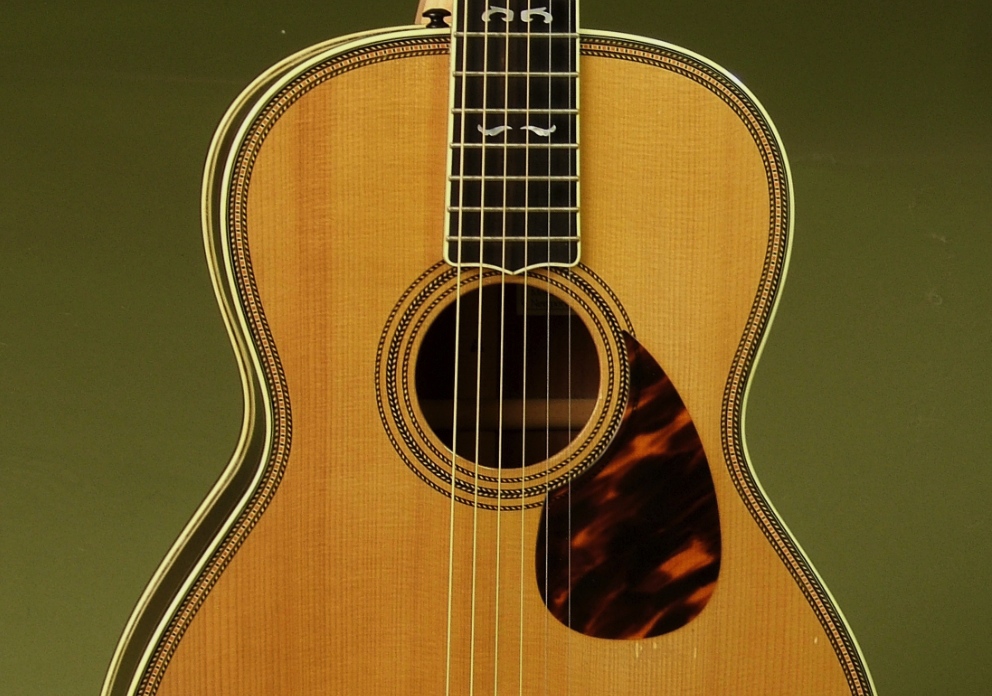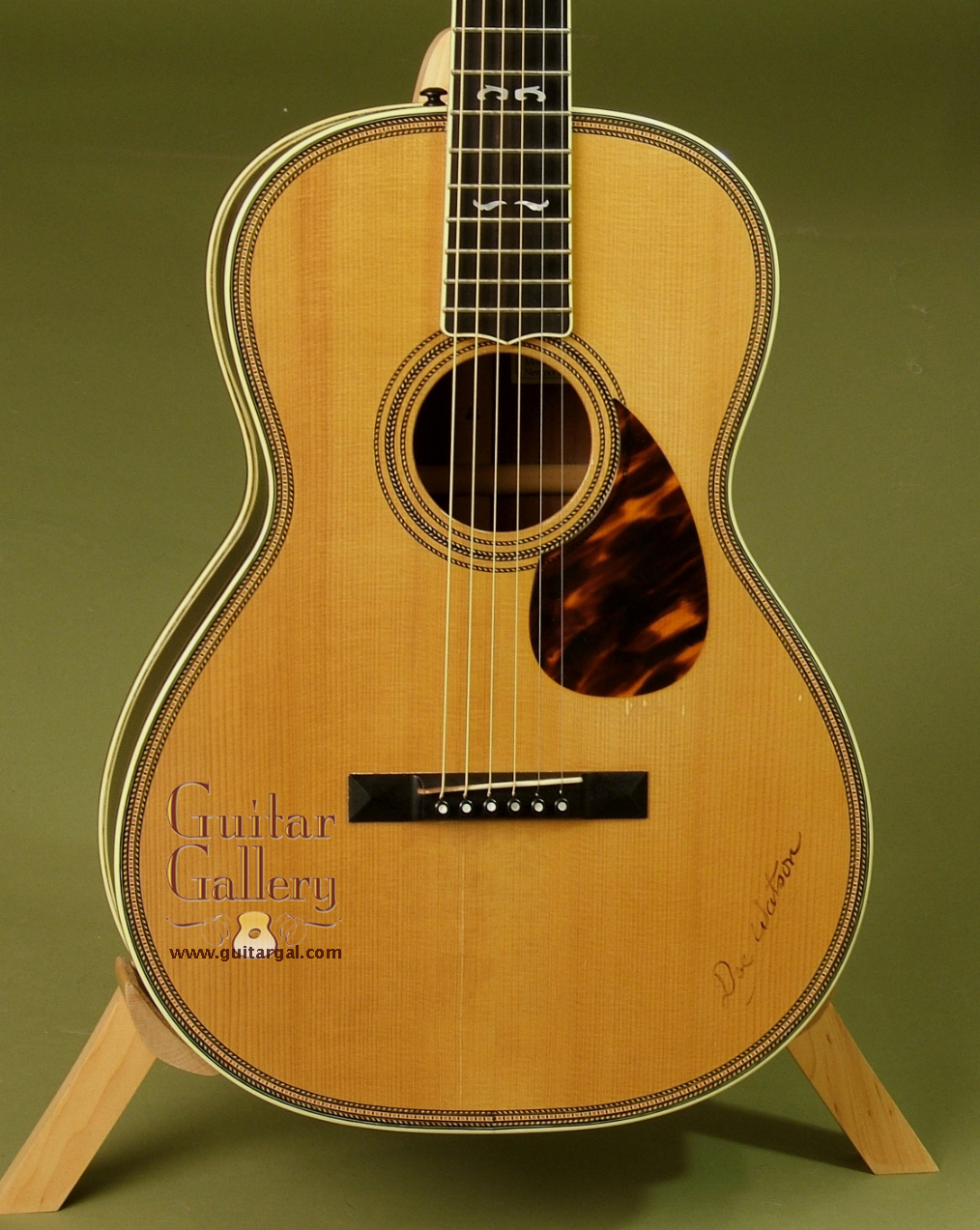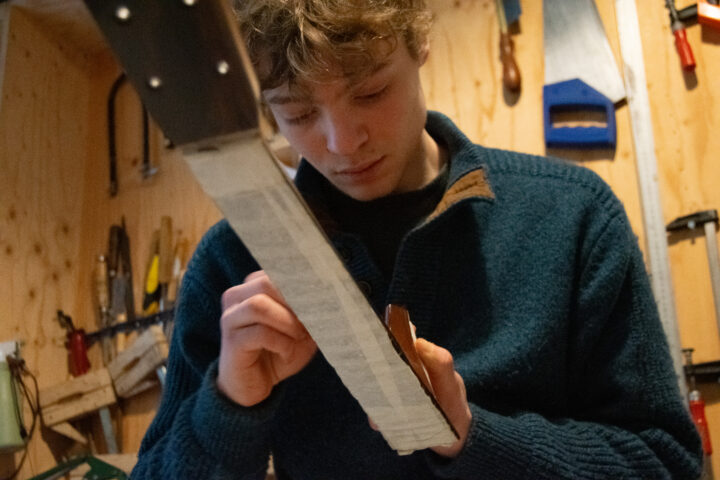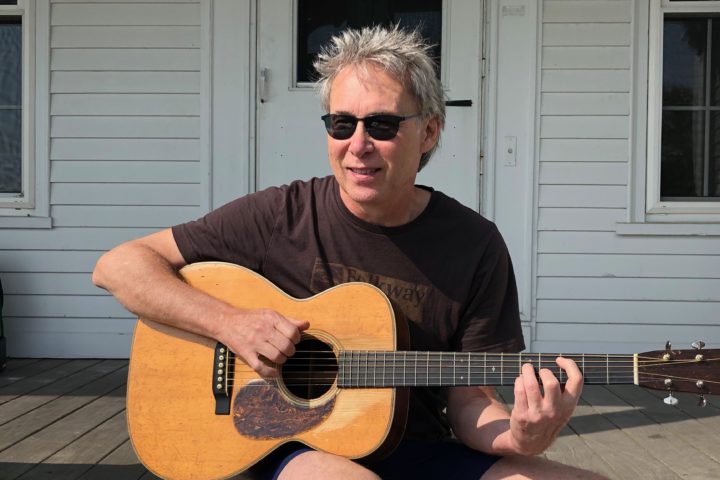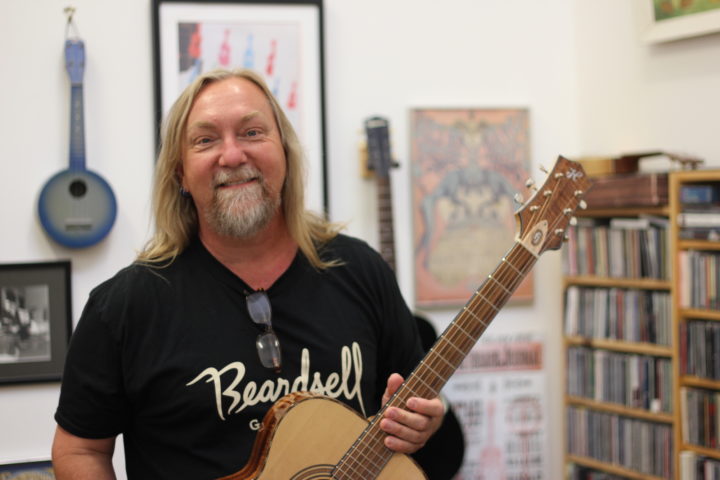Compared to many luthiers, Newport, Tennessee’s John Arnold keeps a low profile (no website, no Facebook pages). But his role in the world of acoustic guitars cannot be underestimated: he’s one of our country’s best builders; he serves as an invaluable expert and resource on the construction of vintage Martin guitars; and he’s even supplied some pretty special Red spruce to many guitar and mandolin builders. When we noticed in late December 2012 that one of Arnold’s most unique creations – one of his three interpretations of the rare-as-hen’s-teeth Weymann Jimmie Rodgers Special guitar – was for sale at Guitar Gallery [it has since been sold], we couldn’t resist asking him a bit more about these guitars.
Fretboard Journal: How did your re-creation of the Weymann Jimmie Rodgers Special guitar come about?
John Arnold: It developed because Doc Watson had come for a visit to the Country Music Hall of Fame and ended up playing [Jimmie Rodgers’ own] guitar. He wanted to see it and the only way for him to see it was to touch it. So they took it out of the glass case and he tightened the strings and played it. That created a big stir.
A mutual friend suggested that I could build a replica. So I went to the Country Music Hall of Fame and took a pattern on the guitar and built Doc’s replica, which we presented to him at MerleFest in 1990. And I built two of those since then. That’s the way that came about.

FJ: Did you get to play the original Jimmie Rodgers guitar at the Hall of Fame? What were your thoughts on it?
JA: That guitar had had a lot of work done to it. The guitar had been restored when they first got it, and the bracing had been redone and all that, but that was back in the ‘70s. And it sat in that case for all that time, not being played and not being strung up. So it really wasn’t set up very well. It didn’t show its best side in that circumstance.
They are unique guitars. They have a sound. Listen to the original Jimmie Rodgers recordings and you can tell which ones he played a Martin on and which one he played that guitar on, because the tone is so different.
People associate Jimmie with that [Martin] 000-45 but Weymann was the company he had the endorsement deal with; Martin didn’t do endorsements back then. They claimed, when they built that guitar, that it was valued at $1500, but I think that’s just a function of it being kind of a one-off thing. The stories that I got were that two of them were built and there are some very bad pictures of him playing one with a solid headstock. But there’s also a story where one guitar was lost in a hurricane…
FJ: You now have an original Weymann Jimmie Rodgers guitar, correct?
JA: I do. The production Jimmie Rodgers is different from the one that they built Jimmie. [The production models] had pearloid on the fingerboard and on the peghead face. And they didn’t have the ribs on the side, which is pretty significant as far as the sound of those guitars. Those ribs, they kind of imitate violin ribs in the way that they stick out. And they stiffen up the sides.
The guitar is very lightly braced, it’s not scalloped but it’s very lightly braced. And the production guitars, because they don’t have those ribs on the side, they have a deeper tone, more bassy tone, than the ones that I built that have the ribs. Even though the bracing is very similar.
FJ: Can you explain the ribs a bit more?
JA: It’s a band that sticks out about 3/32nds of an inch, and it’s a little over a half inch tall, on the edge of the guitar. There have been other instruments built with those ribs, primarily Weymann mandolins and a few archtops. I have a Regal archtop that is a copy of a Gibson Super 400 and it has those ribs on the side of it. But the other guitars I’ve built with those ribs have been primarily just for MerleFest for their raffle grand prize. I’ve built dreadnoughts and other Jimmie-sized guitars with those ribs on.
FJ: What do the ribs do to the tone of a typical D-28 sized guitar?
JA: It’s a similar thing although it’s not as pronounced as it is on the smaller guitars. It makes it a little more punchy sounding. Of course, I combine that with the bracing, too. The bracing is lighter and tapered.
Those Jimmie Rodgers guitars are also coupled with a smaller soundhole. So you have stiffer sides and a little bit looser top but you have a smaller soundhole. And those stiffer sides push it more towards the treble tone, while the smaller soundhole makes it more bassy. It ends up with a balance, but it’s almost more of a Larson Brothers-type sound, where you have that really strong projection, like a megaphone in front of the guitar. It’s punchier and has more projection than a Martin-style guitar.
FJ: What is the ribbing actually made of?
JA: It’s the same as the sides. The Jimmie’s were mahogany. A few of the MerleFest guitars I built were named Rosa Lee after Doc’s wife. And the Rosa Lee models—there was one made out of walnut and one made out of black locust and those had ribs out of the same material as the sides.
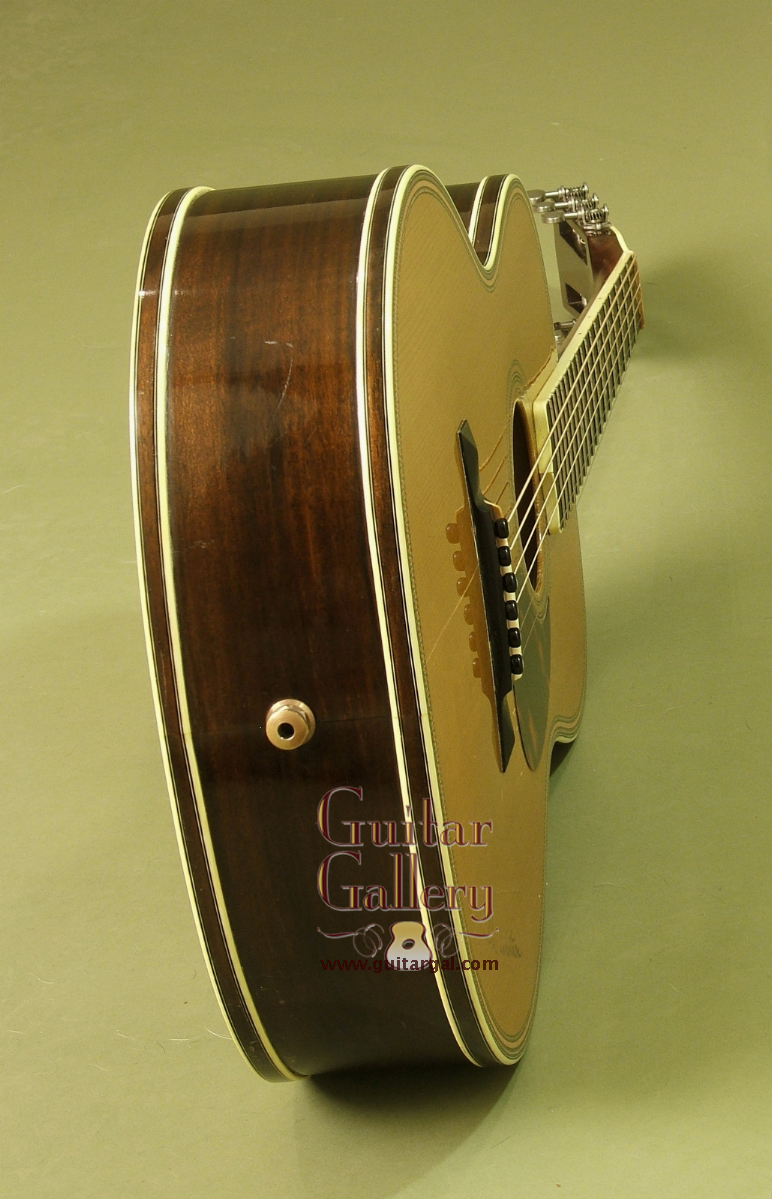
FJ: In looking at these closely, were there are interesting construction methods beyond the ribs?
JA: It was ten years [after building Doc’s guitar] before I found one of the original production guitars and the catalogs. In the catalogs, they called it “special tone bracing.” Essentially it was an X-brace, but the crossing angle was much shallower than a Martin. The X was closer together but being that it only had 18 frets and the soundhole was further from the bridge, it would fit that way, because of that geometry. It was unscalloped, the braces were very small but the other thing they did was reverse the tone bar. They only had single tone bar and it was reversed to wehre it was closer to the bridge on the bass side instead of the treble. And they were single finger braces.
My feeling is that the lighter bracing sort of balanced out with the stiffer sides and the smaller soundhole. It definitely works. Tonally it’s just a different thing. It’s between a Martin and a Larson Brothers, tonally.
FJ: Did you ever contemplate making a Rodgers with the celluloid fingerboard?
JA: I didn’t. I have a hate-hate relationship with celluloid fingerboards on the repairs I’ve done. There’s no way you can surface the fingerboard at all. And doing frets on them is a pain.
FJ: How many original Weymann Jimmie Rodgers guitars are there?
JA: Probably less than 10. I’m not sure when they started manufacturing them but it was very close to the beginning of the Depression. Jimmie’s guitar is 1927, I’m pretty sure. The production guitars were very expensive for what they were. I have old catalogs that have that model in them.
FJ: Will you make any more?
JA: I probably will some day. I haven’t so far but I don’t own one myself so…
FJ: Are you working on anything interesting right now?
JA: I just repaired a Scotty Moore guitar. It’s not one of the old ones he used from years ago. It’s an 1981 Gibson ES-335 that was given to a friend of his. And I repaired it for him. The guy was going out to play guitar with an Elvis impersonator, which I thought was appropriate.
FJ: And are you building any guitars right now?
JA: I’m working on several, most D-28s and an OM-42, just getting started on them. I’ve got one D-28 that is pretty far along but the rest are just in the bracing stage.
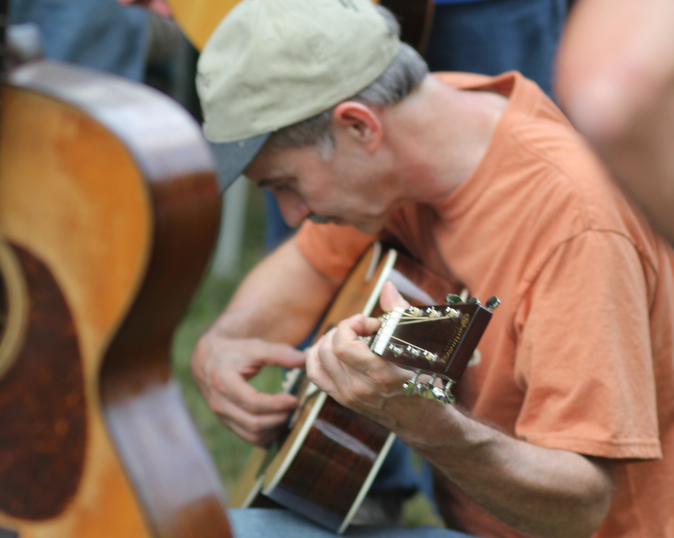
Special thanks to Guitar Gallery for the use of their photos and to John Arnold for the photo of Doc Watson.
